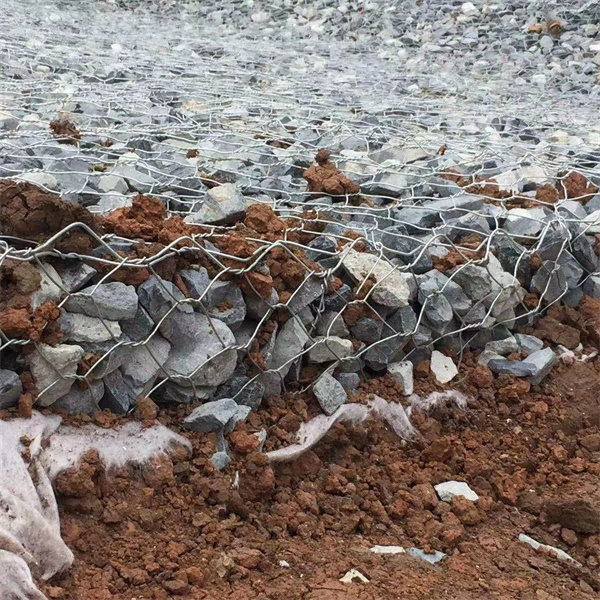nov . 10, 2024 13:20 Back to list
Suppliers of Plant-Filled Gabion Retaining Walls for Sustainable Landscaping Solutions
Gabion Retaining Walls with Plants An Eco-Friendly Solution for Landscaping
In recent years, the demand for sustainable landscaping solutions has grown significantly, inspiring homeowners and landscape architects alike to seek out innovative methods that blend functionality with aesthetics. One such method is the use of gabion retaining walls—wire mesh cages filled with stones that serve as an effective means of soil retention while also enhancing the visual appeal of outdoor spaces. When combined with plants, gabion walls not only become an integral part of the landscape but also contribute positively to the environment.
Understanding Gabion Retaining Walls
Gabion walls are constructed from strong steel wire mesh filled with natural stones, rock, or other materials. They offer durability and strength, making them ideal for controlling soil erosion and preventing landslides. The porous nature of gabions allows for water drainage, thereby reducing hydrostatic pressure behind the wall. This characteristic sets them apart from traditional concrete retaining walls, which often suffer from water buildup and subsequent structural issues.
The versatility of gabion walls extends beyond their functional benefits. They can be styled to fit various design aesthetics, whether rustic, modern, or natural. In essence, gabions can adapt to any landscape, making them a popular choice among landscape architects and homeowners alike.
The Integration of Plants
One of the most attractive features of gabion walls is their potential for integration with plants. The interstitial spaces in the gabion structure allow for the incorporation of vegetation, transforming an ordinary wall into a living green structure. There are several ways to enhance gabion walls with plants
1. Direct Planting Using soil-filled pockets between the stones, you can plant native or drought-resistant species that will thrive in the specific environment of the wall. This not only beautifies the structure but also creates habitats for local wildlife.
2. Climbing Plants Vines and climbing plants can be trained to grow up and over the gabion walls, creating a lush and vibrant look. Species such as climbing roses, clematis, or even edible options like grapevines can provide seasonal changes and visual interest.
3. Vertical Gardens For urban environments where space is at a premium, integrating a vertical garden into the gabion structure expands the possibilities. A combination of soil-filled pockets and a planted trellis can result in an eye-catching green wall that cools the environment while providing fresh produce or ornamental flowers.
Environmental Advantages
gabion retaining wall with plants suppliers

Gabion retaining walls serve not only aesthetic purposes but also environmental functions. Their porous nature allows rainwater to drain naturally, reducing runoff and encouraging groundwater recharge. This is crucial in urban settings where impermeable surfaces often lead to flooding and erosion.
Additionally, by incorporating plants, these walls contribute to improved air quality and biodiversity. Green spaces foster habitats for wildlife and insects, supporting the local ecosystem. This symbiotic relationship between structural engineering and landscaping creates a balanced environment that benefits both humans and nature.
Finding Suppliers
When considering the installation of gabion retaining walls with plants, it is essential to source quality materials and expertise from reputable suppliers. There are many companies worldwide that specialize in gabion systems. Some suppliers focus on producing high-quality mesh materials, while others may provide sustainable sourcing of stone or offer integrated systems that combine gabions with planting solutions.
To find the right supplier, it’s advisable to
- Research Online Utilize search engines and online directories to compile a list of potential suppliers. Look for reviews and testimonials that highlight past projects.
- Seek Recommendations Networking within landscaping communities can yield useful insights into the best suppliers in your area.
- Attend Trade Shows Trade shows focused on landscaping and construction often feature gabion products, allowing you to interact directly with suppliers and evaluate their offerings.
Conclusion
Gabion retaining walls combined with plants represent a forward-thinking approach to landscaping that emphasizes sustainability, functionality, and beauty. With their ability to control erosion, retain soil, and enhance the aesthetic qualities of outdoor spaces, these structures are becoming increasingly popular among homeowners and professionals alike. As we continue to seek ways to harmonize human activity with the natural environment, innovative solutions like gabion walls with integrated plant systems will undoubtedly play a significant role in shaping our landscapes for the future. By choosing the right suppliers and design concepts, we can create a greener and more beautiful world, one gabion wall at a time.
-
The Role of Galvanized Gabion Mesh in Riverbank Protection
NewsJun.26,2025
-
The Role of Gabion Basket Raised Bed in Sustainable Gardening
NewsJun.26,2025
-
Quality Assurance of Wire Mesh Gabion Baskets
NewsJun.26,2025
-
Installation Guide for Welded Gabion Box
NewsJun.26,2025
-
How to Choose the Right Gabion Box
NewsJun.26,2025
-
Different Types of Gabion Wire Mesh
NewsJun.26,2025
-
Why PVC Coated Gabion Mattress Is the Best Solution for Long-Term Erosion Control
NewsMay.23,2025






